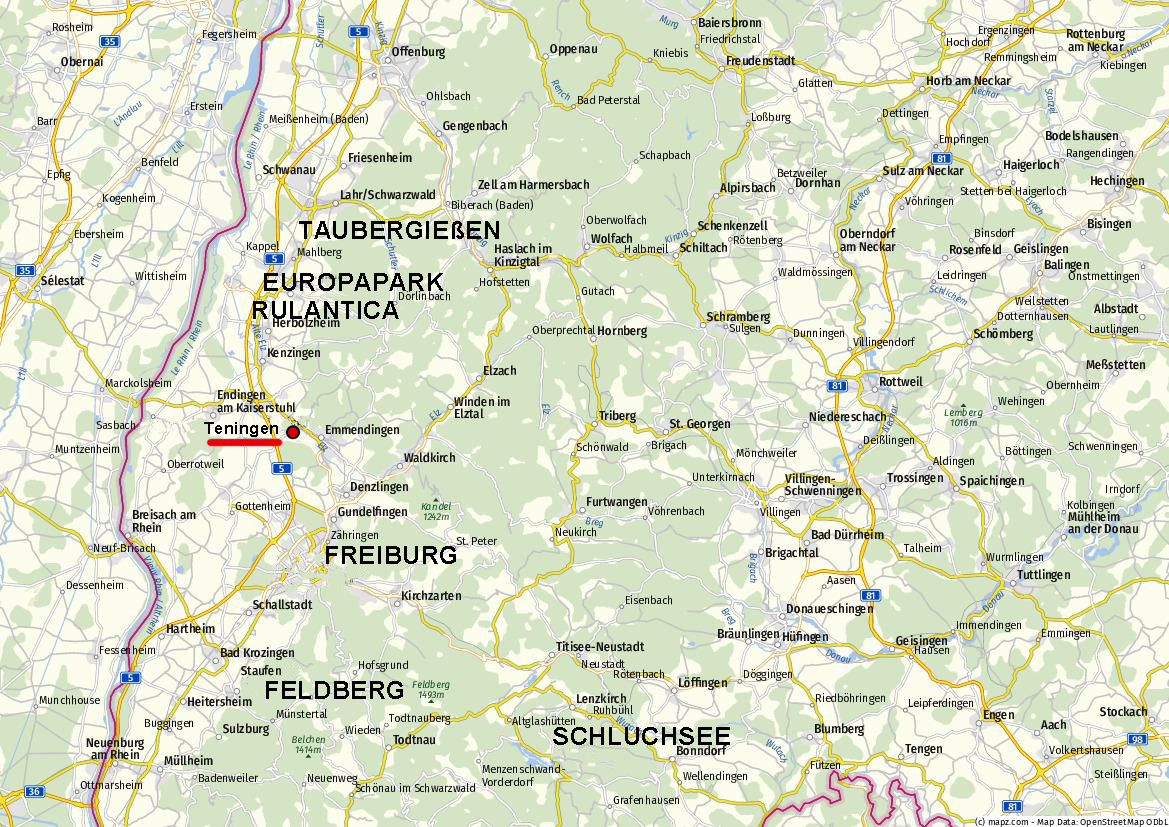Schluchsee
Destination
Attractions
Sustainability
How to get here
Accommodation
Food
Impressions
Others
Destination
The 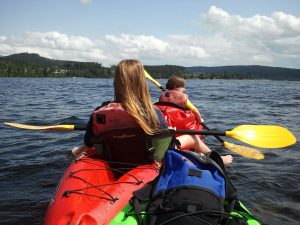 Schluchsee is a reservoir in Schluchsee municipality near St. Blasien in the district of Breisgau-Hochschwarzwald in Baden-Württemberg. It lies south-east of the Titisee and is the largest lake in the Black Forest. At approximately 930 metres (3,050 ft) above sea level, it is the highest sailing area in Germany. The Schluchsee is a paradise for lovers of all kinds of open water and paddle sports. A natural ice rink forms here in winter, with an extensive network of cross-country ski trails around the lake; there is even a ski lift in Fischbach ski resort.
Schluchsee is a reservoir in Schluchsee municipality near St. Blasien in the district of Breisgau-Hochschwarzwald in Baden-Württemberg. It lies south-east of the Titisee and is the largest lake in the Black Forest. At approximately 930 metres (3,050 ft) above sea level, it is the highest sailing area in Germany. The Schluchsee is a paradise for lovers of all kinds of open water and paddle sports. A natural ice rink forms here in winter, with an extensive network of cross-country ski trails around the lake; there is even a ski lift in Fischbach ski resort.
Since the 1960s, the lake has formed part of the Schluchseewerk hydropower complex in which a number of reservoirs are linked by pumping stations. In addition to the natural flow of water, the Schluchsee is replenished with water from the Rhine via a cascade of hydropower plants.
–
The Schluchsee was originally a glacial lake, part of the Feldberg glacier, and its surface was around 30 metres lower than that of today’s reservoir, which was created by the impounding of the River Schwarza. From north-west to south-east, the lake is 7.3 km long and 1.4 km wide and reaches a maximum depth of 61 m.
Attractions
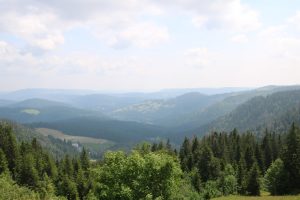 For young people, the Schluchsee has so much to offer: dips in the lake, swimming, windsurfing, diving, canoeing, stand-up paddleboarding, sailing there is a sailing school in Aha mountain biking, e-bikes, cycle hire at Schluchsee railway station, several boat hire stations, and hiking around the lake, with plenty of refreshment stops available.
For young people, the Schluchsee has so much to offer: dips in the lake, swimming, windsurfing, diving, canoeing, stand-up paddleboarding, sailing there is a sailing school in Aha mountain biking, e-bikes, cycle hire at Schluchsee railway station, several boat hire stations, and hiking around the lake, with plenty of refreshment stops available.
Check out Rafftaff boat rental at Schluchsee canoe station: Rafftaff is open from 10 a.m. to 6 p.m., starting 29 April.
Also on offer: Canoes sometimes called Canadian canoes are fitted with two, three or four bench seats. Young children can comfortably sit in a row in the centre or find space on the floor. Stand-up paddleboarding is very popular and great fun. Sit-on-tops are a familiar sight in France and now they are available at the Schluchsee too: these kayaks have great stability when out on the water. Multi-person Canadian canoes are suitable for groups of up to 10 perfect for families.
The open-air Aqua Fun Centre in Schluchsee is situated close to the lake. Swim in the heated pool or take a dip in the much chillier lake definitely not for softies!
Schluchsee Sailing Club offers a range of courses and training options.
Sustainability
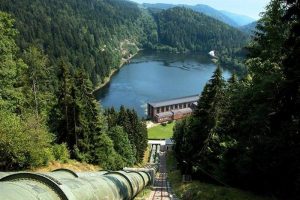 The lake is an important renewable energy source. It belongs to the Schluchsee group of hydropower plants (Werksgruppe) operated by Schluchseewerk AG and forms part of a complex of reservoirs of different heights linked by pumping stations.
The lake is an important renewable energy source. It belongs to the Schluchsee group of hydropower plants (Werksgruppe) operated by Schluchseewerk AG and forms part of a complex of reservoirs of different heights linked by pumping stations.
The power plant complex stretches from Häusern to Waldshut. The Schluchsee is the upper basin of the Häusern pumped storage hydropower plant, which feeds an average of 100 MW into the grid. In addition to the natural inflow from the rivers Schwarza and Ahabach and via the Windgfällweiher reservoir the upper reaches of the Wutach, Seegraben and Haslach, water from the Rhine is fed into the basin via pumping stations near Waldshut.
For comparison: larger wind energy plants have a nominal capacity of 3 – 9 MW. The Schluchsee group consists of three pumped storage power plants in a cascade and is the largest hydroelectric power plant complex in Germany, producing 520 million kW of power annually.
During turbine operation, due to the natural gradient, water from the Schluchsee flows through a series of pressure tunnels to the three power plants before joining the Rhine near Albbruck. Electricity is then used to pump water from the Rhine back into the Schluchsee 619 m higher up. This information was taken from:
www.schluchseewerk.de
Schluchsee pumped storage hydropower complex
The Schluchsee pumped storage complex produces approximately 520 million kWh of electricity annually from its three power plants. This annual output is sufficient to supply a town with a population of around 300,000.
However, the purpose of a pumped storage power plant is to feed additional electricity into the grid during periods of peak demand (when large numbers of people need electricity) and to store the electricity produced by other plants (coal-fired, nuclear, wind, solar) by pumping up water when power consumption is low.
Unfortunately, around 15% of the energy is lost in the process.
Energy suppliers must generate precisely the amount of electricity required at any time, day and night. During daytime peak periods, two or three times more electricity is consumed than at night.
If less electricity is generated than is required, the rotational speed of the generators in the power plants and the transformers that generate high voltages for electricity transmission are at risk of overheating and exploding, causing a total power outage. This has happened in both the US and Italy in recent years.
With the expansion of renewable energy sources (solar, wind, etc.), the daytime fluctuations in power generation will increase. Electricity storage facilities such as pumped storage power plants will therefore become even more important.
How to get here
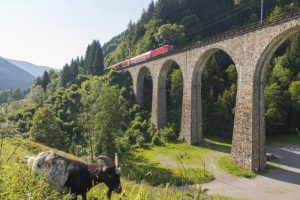 The Höllentalbahn railway operates a service from Freiburg im Breisgau to Seebrugg every 30 minutes. The line passes through Hinterzarten, Titisee, Feldberg-Bärental (DBs highest railway station, 967 m above sea level) and Altglashütten and then travels past the Windgfällweiher reservoir. There are three stops at the Schluchsee in Aha, Schluchsee centre and in Seebrugg, where the line terminates.
The Höllentalbahn railway operates a service from Freiburg im Breisgau to Seebrugg every 30 minutes. The line passes through Hinterzarten, Titisee, Feldberg-Bärental (DBs highest railway station, 967 m above sea level) and Altglashütten and then travels past the Windgfällweiher reservoir. There are three stops at the Schluchsee in Aha, Schluchsee centre and in Seebrugg, where the line terminates.
German rail operator Deutsche Bundesbahn aims to become climate-neutral. According to information provided by DB, the proportion of green energy used to power the railways is increasing rapidly, reaching 57 per cent in 2018.
No other form of transport is as eco-friendly as rail. DB aims to maximise this environmental benefit: its goal for 2030 is to halve carbon emissions in all its worldwide operations against the 2006 baseline and increase the renewables share in rails energy mix to 80 per cent, rising to 100 per cent by 2038. DBs target is to achieve climate neutrality by 2050.
Accommodation
Schluchsee-Wolfsgrund Youth Hostel
This camp is situated close to the lake near Hotel Auerhahn and offers various amenities, including a tree house.
Overnight in the forest – right by the lake. Camp guests have various locations and types of accommodation to choose from. Everything on offer is carefully selected, has its own story to tell and is not here by chance. That’s why everything has a name, not a number. Whether it’s a teepee, a tree tent, a pod or a space to pitch a tent or park a campervan – camping here brings you closer to nature.
Food
Restaurants and cafés in Schluchsee
There are numerous restaurants in Schluchsee that will make your holiday in the Black Forest something special in culinary terms. After all, people like to treat themselves to something, especially when it comes to food and drink. Good gastronomy will not be withheld from you in the Black Forest either. Whether directly on the lake or in the town center, Schluchsee offers many good restaurants and cafés.
https://www.hochschwarzwald.de/hochschwarzwald-region/orte/restaurants-gasthoefe-und-cafes-in-schluchsee
Impressions
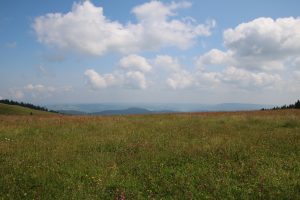
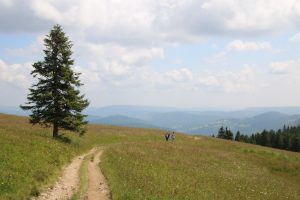

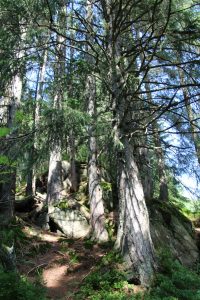
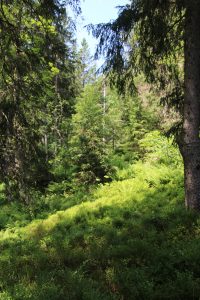
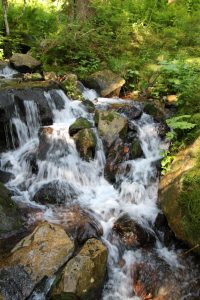
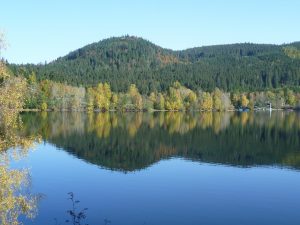
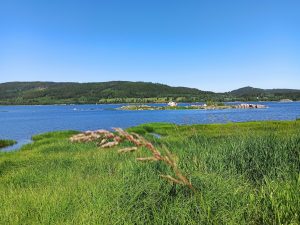
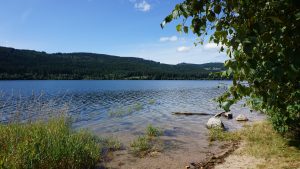
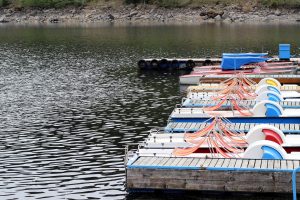
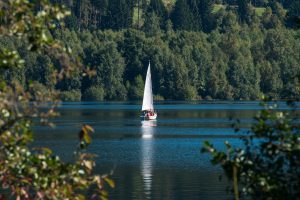
Others
Black Forest cherry cake – Classical style
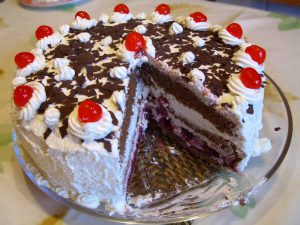
Chocolate sponge cake
6 eggs
250 g caster sugar
pinch of salt
½ tsp of vanilla extract
1 tsp lemon juice
1 tsp lemon zest
170 g flour
25 g cornstarch
40 g cocoa
60 g butter
Kirschwasser whipped cream
1200 g cream
15 g (=1 ½ tbsp) gelatine powder
45 g white sugar
120 g Kirschwasser
Kirschwasser cherries
350 g sour cherries
50 ml Kirschwasser
Kirschwasser juice
80 g mix of cherry juice und Kirschwasser
Chocolate chips
80-100 g Dark Chocolate (70% cocoa)
To assemble
Springform cake pan: Ø 24 cm
Cake ring: Ø 26 cm
Baking time: 35-45 minutes at 190°C
In a large bowl, combine eggs, sugar and ingredients and beat well. Heat mixture using the double-boiler method and beat constantly until mixture has reached 55°C. Remove from heat and beat using a mixer until cool again.
Heat butter gently. Mix flour, cornstarch and cocoa in a bowl. Carefully dry ingredients into egg mixture. Slowly pour melted butter into mixture and gently fold in.
Put springform cake pan on a baking tray covered with baking paper. Pour sponge mixture into cake pan and bake in pre-heated oven.
Remove cooled sponge cake from pan and leave to cool completely.
Using a long knife cut the sponge cake into three layers.
Whip cream in portions until soft peaks form and collect in large bowl. Mix gelatine powder, sugar and Kirschwasser in a sauce pan and leave to swell for 10 minutes. Heat slowly and stir until gelatine is completely dissolved. Add a little whipped cream and stir to combine. Carefully fold Kirschwasser-gelatine mix into whipped cream.
Drip drain the cherries, mix them with the Kirschwasser and let soak for a minimum of 12 hours. Select 7-8 cherries for the decoration.
Put Kirschwasser cherries into sieve, squeeze and collect the Kirschwasser juice.
Add Kirschwasser or cherry juice at discretion.
Using a palette knife, cut thin chocolate shards from the chocolate bar, or grate or shave chocolate.
Place one of the sponge cake layers into cake ring and soak with Kirschwasser juice using a brush. Spread half of the Kirschwasser whipped cream over sponge and spoon cherries on top, gently pressing them into the cream. Place second cake layer on top, again soak with Kirschwasser juice and spread half of the rest of the Kirschwasser whipped cream over top. Add third cake layer, soak and spread a little cream over top. Refrigerate several hours or over night.
Take cake out of cake ring and mark the desired number of pieces on top. Spoon rest of the cream into pastry bag fitted with star decorative each and decorate each tip with rosettes. Place half a cherry on each piece. To finish, sprinkle chocolate shards over centre.
(Quelle: Schwarzwälder Kirschtorte, Käflein, Gmeiner, Hobuss, Edition Kaeflein, 2008
Taubergießen
Destination
Attractions
Sustainability
How to get here
Accommodation
Food
Impressions
Destination
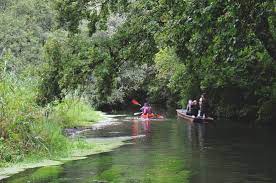 The Taubergießen is a nature reserve, also known as an alluvial landscape, that is located in the area between Freiburg im Breisgau and Offenburg, exactly near Rust. It covers an area of 1,697 hectares and is one of the largest and oldest nature reserves in Baden-Württemberg. The landscape is characterized by sand and gravel benches and dense bushes. The water from the pouring is very clear. The nature reserve is home to rare plant species and endangered animals. In addition, avalanche forests are being created which have not been managed since 1982. Taubergießen also supports many recreational activities such as the famous canoe tour, which is carried out by the owner of the canoe fleet Anton Kossmann. There are also impressive hiking trails, cycle paths and lookout points. The administration of the nature reserve is carried out by the Regierungspräsidium Freiburg.
The Taubergießen is a nature reserve, also known as an alluvial landscape, that is located in the area between Freiburg im Breisgau and Offenburg, exactly near Rust. It covers an area of 1,697 hectares and is one of the largest and oldest nature reserves in Baden-Württemberg. The landscape is characterized by sand and gravel benches and dense bushes. The water from the pouring is very clear. The nature reserve is home to rare plant species and endangered animals. In addition, avalanche forests are being created which have not been managed since 1982. Taubergießen also supports many recreational activities such as the famous canoe tour, which is carried out by the owner of the canoe fleet Anton Kossmann. There are also impressive hiking trails, cycle paths and lookout points. The administration of the nature reserve is carried out by the Regierungspräsidium Freiburg.
Attractions
It is a good attraction for certain because it is one of the natural conservation areas in Baden-Württenberg. In this nature reserve there are also many leisure time decisions for those that are very interesting, for example, you can look after a lot of cool mountain bike trails there, but of course there are also routes for other bikes. One of the political arrests in the Taubergießen is the canoe tour.
The bike ride
There are different lengths that can be made. The longest bike tour you can do, say 35 km. For cyclists it is an attractive place because you can ride mittens in the nature and because different and complex plant species belong there. In a moment it’s also very nice on the water.
The canoe tour
The canoe tour north a variety of animals and plants. You can only start a canoe tour as a group. The owner of the canoe fleet is the Koßman fleet. The canoe tour started on one of the sugar bridges in Rust. The route is 7 km long and takes 2 hours. The cost of millions per boat for a maximum of 10 people is 120 euros. The bot is available between 8 a.m. and 8 p.m.
Sustainability
Taubergießen is a nature reserve: a nature reserve is a place or area that is protected by law. In these areas special protection of nature and landscape is required. Nature reserves are created when the protection of animals or plants is needed or when nature (plants, landscape) is rare. In nature reserves there are also different rules such as:
- you mustn’t go out of the way
- you may destroy a plant or even take animals with you
- you may not camp or bathe and if only where it is advertised
- dogs on a leash
- do not drive with motor vehicles
- make waste only in the containers designed for this purpose
In addition, there is a speciality in the Taubergießen, there’s a spell forest. A spell forest is a piece of forest that is left alone. This means that everything in this forest can be wild without the influence of humans.
The boat trips are made with a “Stocher-Barge” that is reached or accelerated with the current and a long wooden lance, this works only with muscle power.
How to get here
The Taubergießen are located near Rust (near the Europa-Park) so it is not a big problem to get there by public transport. If you go there from Freiburg you should take the train to Herbolzheim. From Herbolzheim you can take the bus to get to Rheinhausen. From Rheinhausen it is difficult to get to the Taubergießen by public transport (better said to the parking lot where the meeting point for the guided tour is). From there it would be a half hour walk. But the best way would be to organize a bus that could take everyone there at once.
If you are not in Freiburg you should try to find a train connection to Herbolzheim.
Accommodation
This nature reserve is close to the Europa-Park, so you might choose one of the hotels in the resort and spend some time in the adventure park or Rulantica -the waterworld. (See above!)
If you would like to stay in a quieter place, you can choose one of the guesthouses or bed and breakfast places in Kappel, Rust or Rheinhausen which is a bit closer to the starting point of the boat trips in the nature reserve.
A special place is “Moxy Rust” because the hotel takes part in a programme for “sustainable travelling” and they have done a lot in terms of reducing waste, saving water (e.g. by using special toilets), working with food from local markets, counterbalancing their CO2 emissions and informing travellers about sustainable projects in the region.
Food
After a boat trip in the nature reserve you can go to “S’Dirlis Fischerstube” in Rheinhausen to have some locally caught fish (please make a reservation beforehand!).
If you like fish you can find a lot of good restaurants in Rheinhausen, Rust or Kappel that will serve excellent fish dishes alongside with other food like meat or vegetarian.
Impressions
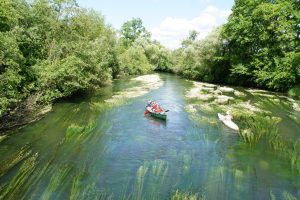

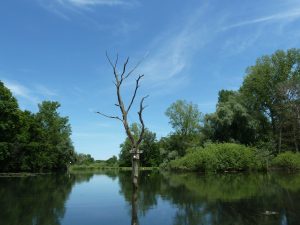
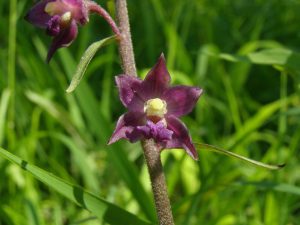
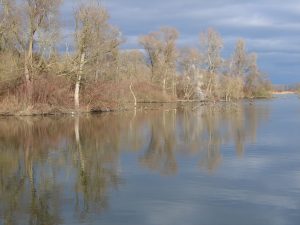
Freiburg - VAUBAN
Destination
Attractions
Sustainability
How to get here
Accommodation
Food
Impressions
Destination
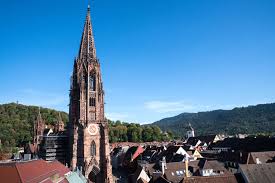
Freiburg covers an approx. territory of 153,1 km2 and has approx. 229.636 inhabitants, it is the 4th biggest city in Baden-Württemberg.
Freiburg is nestled in the so called „Three-country corner“, the South-West corner of Germany, together with France and Switzerland.
Freiburg is also called the University city, because of all the students that study at the University.
One Specialty is the „Bächle“, it is a 30cm deep waterway, from medieval times, which goes through the old city, and is one of the landmarks of the city.
Freiburg’s old town is very attractive, it combines the old times with modernity.
You will notice that many people use bikes, which can also be rented.
In the old town it is not permitted to use a car, except for emergencies.
Attractions
VAUBAN
This quarter of Freiburg is especially interesting for young people because of the way of life it enables: more than 5000 people live there following the rules of civic engagement, building things together and environmental consciousness. Almost every building is built passive or plus energy construction, so most energy is produced by solar panels, the original tree population was preserved when building houses and streets and green areas inbetween do not only ensure a good climate, but also serve as playgrounds for the children of all the young families who decided to live a life as sustainable as possible in modern world. Even cars are partially banned from this quarter and most people use only public transport, which had been fully developed since 2006.
Sustainability
Vauban is a district of Freiburg with 5600 inhabitants. It’s called a green district because it’s Freiburg`s most sustainable district. The Vauban district is the newest, partly car-free district in the south of Freiburg im Breisgau. The houses in Vauban are colorful and with gardens. You don’t see cars in Vauban today, because the cars have to park outside Vauban. There are two central accommodations in Vauban. A B&B Hotel “Freiburg Süd” for 77 € and a Greencity hotel for 12€. There are solar panels that produce more than 50% of energy and a sustainable café (repair café). The things (e.g. bicycles) are repaired in the community.
How to get here
There are a lot of possibilities to reach Freiburg.
By train:
Freiburg has a well developed network of local public transport. You can reach it by train. The
biggest train station is called „Freiburg Hauptbahnhof“. Up to there you can take the city railway,
which takes you in just a few minutes to the city centre.
By bus:
There are a lot of busses from surrounding villages, which you can take to Freiburg or you can
take a coach.
With the city railway you are in just a few minutes in the city centre of Freiburg.
By bike:
Freiburg is a city of cyclists. There are more than 400 km of cycle paths through Freiburg. Almost
30% of the transport routes are covered by bicycle. On the „Radstation“ next to the train station
„Hauptbahnhof“ you can park your bike, which is roofed and safe there.
By the „Frelo“:
„Frelo“ is a bicylce rental system with over 50 stations in the city. Its very easy to use: just register,
unlock the bike with the app and start your bicycle tour in Freiburg.
By foot:
You can visit the city center of Freiburg by foot. The whole city center is pedestrian zone, all
businesses in the city can be reached easily by foot and in just a short time. The city railway you
can use
By car:
Freiburg is easily accessible from the highway „A5 Karlsruhe-Basel“. You have to take the exit
„Freiburg Stadtmitte“. You can also reach Freiburg via the „B31“. Use the parking guide system,
which will provide you with up to date information about the locations and free parking spaces.
By plane:
The next airport to Freiburg is „Basel-Mulhouse“, so you can reach the city via a bus shuttle
service in 55 minutes.
Attribution: https://visit.freiburg.de/en/important-information-for-your-stay/getting-there-mobility
Accommodation
The greenest way to stay overnight in Vauban is probably the Green City Hotel Vauban Freiburg. This hotel is listed on the website of “Green Pearls” which points out unique places according to their sustainability.
Of course you will find a lot of other hotels and guesthouses in Vauban and you can choose any of them – the special feeling of this quarter living sustainability to the end is omnipresent.
Food
There are many special places to eat or have a drink in this area too:
One special restaurant is called “Veggie Liebe” and they serve – as the name implies – vegetarian food like Hummus, Falafel and other classics from the oriental kitchen.
For people preferring the vegan lifestyle there is even a better place called “BebundBene”, where you can also taste a special drink called Kombucha – a kind of fermented tea in different flavours.
The café “5Senses” is also worth mentioning here because the company was founded with the ideas of fairness amongst everyone, respectful and appreciative contact with people and nature and a sustainable value creation chain from coffee farmers to suppliers down to workers and finally the customers in the café. Apart from that they roast their own coffee and this simply smells and tastes fantastic!
There would be a lot more to mention here, but it’s better if you come and see yourselves!
Impressions
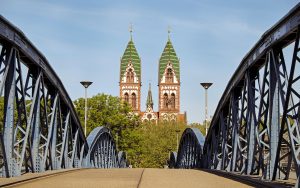
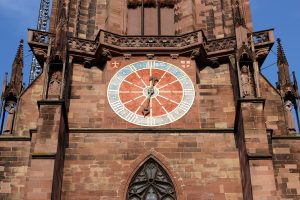
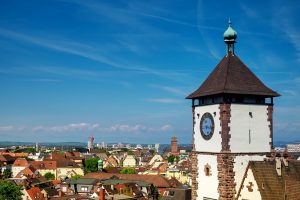
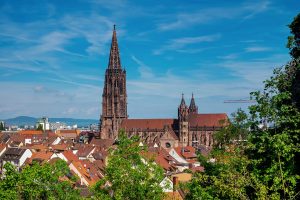
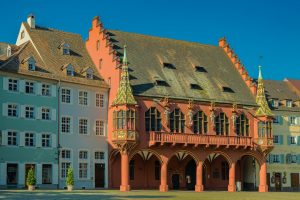
Rulantica
Destination
Attractions
Sustainability
How to get here
Accommodation
Food
Impressions
Destination
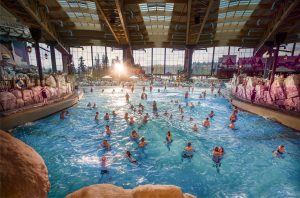 Rulantica is a water and an adventure park, it belongs to the Europapark Rust near Freiburg. The water world Rulantica is open daily from 10:00 till 22:00. For visitors of the hotel the swimming pool opens earlier – at 09:00. The swimming pool has windows facing the Black Forest with a wonderful view. In the water park there are 9 theme areas for relaxation and action. In these areas there are 25 attractions including 17 slides. For overnight accommodation, Rulantica has a hotel including 2 restaurants and 4 bars.
Rulantica is a water and an adventure park, it belongs to the Europapark Rust near Freiburg. The water world Rulantica is open daily from 10:00 till 22:00. For visitors of the hotel the swimming pool opens earlier – at 09:00. The swimming pool has windows facing the Black Forest with a wonderful view. In the water park there are 9 theme areas for relaxation and action. In these areas there are 25 attractions including 17 slides. For overnight accommodation, Rulantica has a hotel including 2 restaurants and 4 bars.
You´re in action all day, so come on! We wish you lots of fun and relaxation!
You can order the tickets online:
https://www.europapark.de/de/rulantica/tickets-angebote/tickets-angebote
The Rulantica Theme Park is an adventure water park that opened in 2019. It is located in Rust (a town in the south of Baden-Württemberg, approx. 20 km north of Freiburg im Breisgau). Europa Park is also 1.5 km away. Rulantica is open all year round from 10 a.m. to 10 p.m.
Attractions
Rulantica is so interesting for teenagers as there are four thematic areas and a lot of slides. If you like relaxation, there is something for you, e.g. a sauna and a wellness area. But it is also amusing for smaller children because there is a water park. The smaller ones and also the bigger ones can do all kinds of things there. For example, the adults can swim in the swimming pool, go on spectacular slides or swim in the wave pool. If you want to take a break, you can go to restaurants and bars. After the break you could have a go on one of the giant slides with tires or put take a tire-tour in a pool with wild currents. Younger children can go to Snorri´s Little Octopus – a water climbing park.
In short there is something for everyone!
Why is Rulantica so popular for young people?
Rulantica offers a fun experience for all ages, on an area of 32,600 square meters, divided into nine themed areas. There are 27 water slides with a total length of 1,598 m, a lazy river, the largest wave pool in Germany, several water playgrounds, waterfalls, bubble loungers and a virtual reality snorkeling experience awaits visitors. Since June 2021, the largest water playground in Europe has been located outside. There are also two self-service restaurants, a bar, a café and two pool bars. The Rulantica app can be used to check the waiting times at the individual attractions or a virtual park map.
Sustainability
Great importance was attached to ensuring environmental sustainability. The warm water is stored outside and does not have to be reheated every day. This is thanks to an innovative filter technology, where 80% of the wastewater is recycled. Thus, Rulantica only needs to replenish 20% of its fresh water.
Rulantica has its own photovoltaic system, which produces 1.1 kWh of electricity per year and thus saves 600 tons of CO2 emissions per year.
Furthermore, two combined heat and power plants provide heat and electricity in Rulantica. Most of the lighting in Rulantica is powered by long-life LED lamps or energy-saving lamps.
Finally, As a result of the construction of Rulantica, 2000 trees, 18,000 wild bushes and 60,000 flowers were planted on the site as ecological compensation. There is even a bee pavilion with 50,000 bees and approximately 200 beehive boxes as well as a wild bat sanctuary.
How to get here
By Car:
On the A5 motorway, take exit 75b Rust.
Public Transport:
You can take the regional train and get off at Ringsheim station. From there the Rulantica bus (line 7231/7200).
In addition, the EuroCityExpress Frankfurt-Milan stops twice a day at the train station in Ringsheim.
By plane:
Karlsruhe/Baden-Baden airport is 64 km away, Euroairport Basel 90 km. A shuttle service is available from the airport.
Accommodation
There are six themed hotels belonging to Europa Park; The Hotel Kronasar, which is an underwater world themed hotel and is located directly opposite Rulantica. Other hotels that also accommodate guests of Europapark are: El Andaluz, Castillo Alcazar, Bell Rock, Santa Isabel, Colosseo, as well as accommodation in tipi tents, log cabins and covered wagons of the camping resort.
The largest amusement park in Europe, Europapark, is 1.5 km away. Europark has also placed great value on environmental sustainability. In the immediate vicinity is a nature center which has a climate change garden. You can also take a boat through the nature reserve here.
The city of Freiburg is about 20 km away on the edge of the Black Forest. Freiburg is known for eco-home and sustainable living, and is one of the greenest cities in Europe. In addition, in 2012 Freiburg was awarded the prize “Germany’s most sustainable city”.
Food
In the entrance hall there is a café where you can get some sweet or salty snacks and hot or cool drinks before you head off into the waterworld adventure.
If you are hungry you can take a seat in one of the restaurants: Lumalunda (for pizza, pasta or salads with a northern touch or Snekkjas (for burgers and fries or sausages with curry and salads). In summer there is also a restaurant outside called “Snorri’s Piknikbud” that offers Hot Dogs, sandwiches, fruit and sweets.
For the small guests – and those who simply like ice cream – there are also 2 Langnese Happiness Stations (one inside and one outside) where soft ice cream is freshly mixed according to your own taste.
5 bars indoors and outdoors for Smoothies, Cocktails and other drinks also offer a good opportunity for parents to relax with a good drink in hand while the kids are on an adventure trip around Snorri’s world. Two of these bars are pool bars which let you enjoy your drink floating in the water.
Impressions
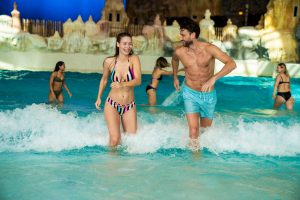
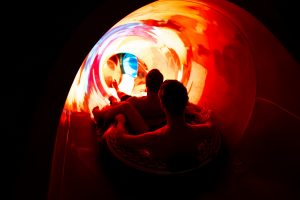
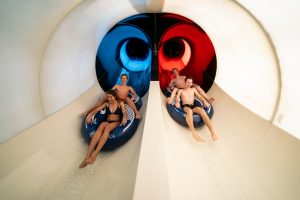
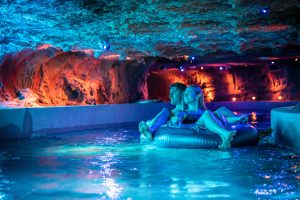
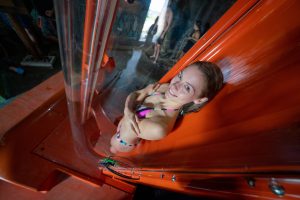

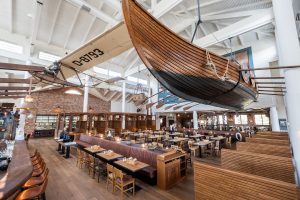
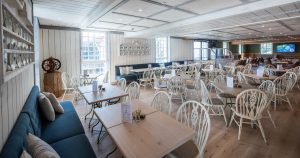
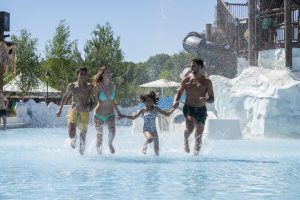
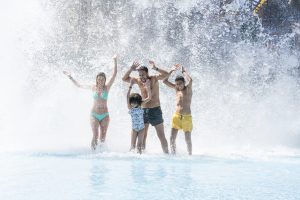

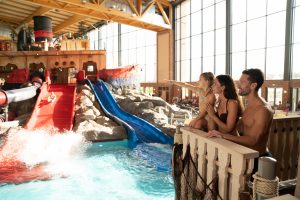
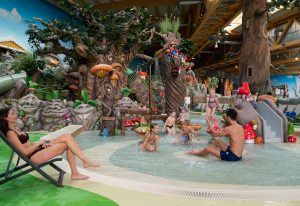
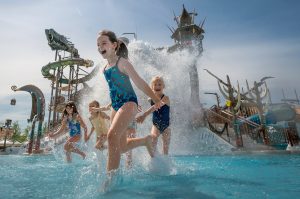
Europa-park
Destination
Attractions
Sustainability
How to get here
Accommodation
Food
Impressions
Destination
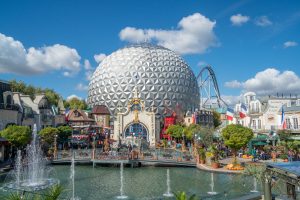 This popular tourist attraction is located in Rust, a little town about 20 km north of Teningen. From Teningen it takes about 20 min to get there by car or 45 min by public transport.
This popular tourist attraction is located in Rust, a little town about 20 km north of Teningen. From Teningen it takes about 20 min to get there by car or 45 min by public transport.
The Europapark is an adventure park, which is divided into different thematic sections, representing European countries. In each “country” there are replicas of famous sights, for example the Globe Theatre (the original building can be found in London!) as venue for shows in the English section. You can also find rollercoasters and rides matching the country topic, for example in the Italian section there is a ride about “Leonardo da Vinci” called “Volo da Vinci” or in France you can find the “Can Can Coaster” which is a rollercoaster in the dark dealing with the famous French Can Can dance.
Moreover, there are traditional food and drink offers in each country section, like “Flammlachs” (a kind of salmon dish) in Iceland, Churros in Spain, Pizza and Pasta dishes in Italy, meat dishes like Gyros in Greece or Finnish Glögg in Scandinavia and Russian coke in Russia.
Attractions
The Europapark – a fantastic place to spend a day, a weekend or even longer!
In the past this fabulous park was elected “Best Adventure Park of the world” for the several times and I several categories.
Main attractions of the park are the megacoasters like “Silverstar” (simulating a car race in Monaco) “Bluefire” (a fast ride in Iceland) and “Wodan” (Timbur coaster) as well as big water coasters, like “Poseidon” in Greece or “Fjord Rafting” in Norway.
For the younger kids there are fairytale rides like the latest attraction “Snorry tours” (about a little octopus) and the whole family can visit great shows, which even change with the season (Halloween, Christmas, Easter…)
Why we like the place so much:
David: “I love the Silverstar coaster, because it is very high and fast and I like the thrill. “
Lucian: “I love the Timber coaster “Wodan” because of the very different way of driving experience on a wooden coaster. “
Lukas: “I love everything about this place because you can do and see so many different things. “
Sustainability
Solar energy
Since 2001 there is a solar power station on the roof of the gangway from the visitor parking to the entrance of the park. In total it is 300 m long and has 2500 solar panels altogether in operation, which produce about 220.000 KWh every year.
With this amount of energy you could easily power a whole middle-size village for that time.
This alternative and green way of generating energy reduces the environmental impact by 150 tonnes of CO2 per year.
Generating electricity from sunlight is based on the so-called photovoltaic or photoelectric effect. This happens in most cases on a roof, because there is where the sun rays can best be collected.
Solar cells are the essential part and the most important component in a solar power station. When the sun’s rays hit the semiconductor materials in the solar cells, electrons are stimulated, so that they start moving. This kinetic energy generates electricity. The more the sun is shining, the more solar power is generated.
Photovoltaik is renewable because it saves CO2 and doesn’t blow it out.
Diesel becomes electric:
Europapark is converting its panoramic railways from diesel to electric drives.
This means that the four panoramic lanes are exhaust gas and odorless.
All panorama lifts were switched to electric by 2021.
The electric panorama lifts are already in operation.
It is charged contact-free at every stop in any station.
For this purpose, four loading units were installed per station, onto which the electric locomotive automatically drives. “The technology lasts much longer and can be disposed of in a much more environmentally friendly way.
In addition, the trains will now be illuminated with energy-saving LED lamps.
How to get here
By Car:
On the A5 motorway, take exit 75b Rust.
Public Transport:
You can take the regional train and get off at Ringsheim station. From there the Rulantica bus (line 7231/7200).
In addition, the EuroCityExpress Frankfurt-Milan stops twice a day at the train station in Ringsheim.
By plane:
Karlsruhe/Baden-Baden airport is 64 km away, Euroairport Basel 90 km. A shuttle service is available from the airport.
Accommodation
There are six themed hotels belonging to Europa Park; The Hotel Kronasar, which is an underwater world themed hotel and is located directly opposite Rulantica. Other hotels that also accommodate guests of Europapark are: El Andaluz, Castillo Alcazar, Bell Rock, Santa Isabel, Colosseo, as well as accommodation in tipi tents, log cabins and covered wagons of the camping resort.
The largest amusement park in Europe, Europapark, is 1.5 km away. Europark has also placed great value on environmental sustainability. In the immediate vicinity is a nature center which has a climate change garden. You can also take a boat through the nature reserve here.
The city of Freiburg is about 20 km away on the edge of the Black Forest. Freiburg is known for eco-home and sustainable living, and is one of the greenest cities in Europe. In addition, in 2012 Freiburg was awarded the prize “Germany’s most sustainable city”.
Food
In each quarter of the park you can find snack bars, food stalls and restaurants that are typical for the country represented.
So, you can start the day with a croissant in France or a yoghurt with nuts and honey in the Greek part. Then you can go ahead to have a little snack inbetween in Scandinavia – e.g. a fish bagel or shrimp roll or some sweet Poffertjes in the Dutch quarter. For lunch you could go for some “Flamlachs” (smoked and grilled salmon) in Iceland or if you are more into spices, you could take a seat in the restaurant with the same name, that offers delicious Indian Food. When it get time for a coffee, you might enjoy some Churros (Spanish) or Donuts in England. As you look for dinner, Italian restaurants offers a wide range of typical food like pizza or pasta or to make it a bit more unusual you could have some Raclette (melted cheese and potatoes) in Switzerland. When the day slowly comes to an end you might finish in one of the Pubs in England or Ireland with a good ale or enjoy a cool beer in the Bavarian beer garden. You see: you could spend all day eating, if there weren’t those other attractions in the park …
Oh, and don’t forget to take home some freshly baked bread and smoked bacon from the black forest on your way out through the German quarter.
Impressions
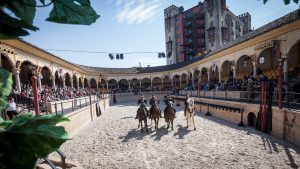
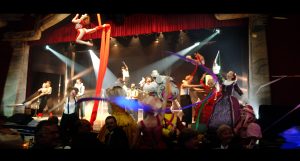

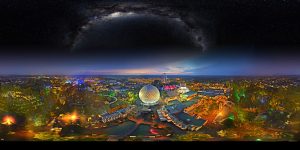
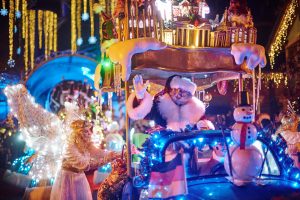
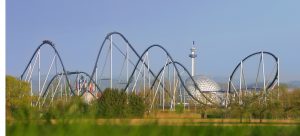
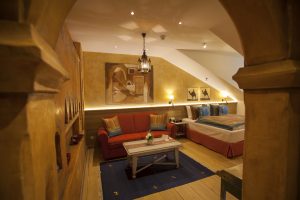
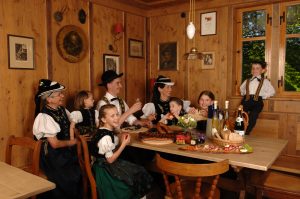
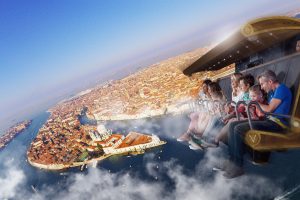
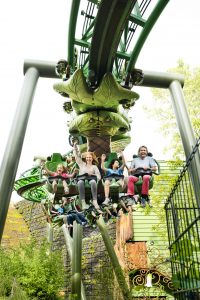
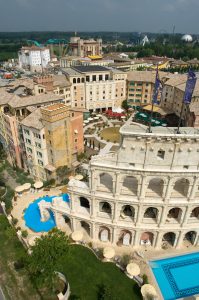
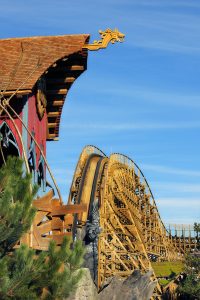
Schwarzwald - Feldberg
Destination
Attractions
Sustainability
How to get here
Accommodation
Food
Impressions
Others
Destination
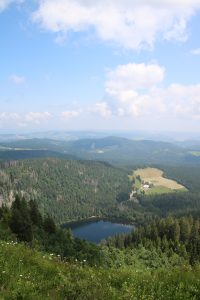 The Feldberg is with 1493 meters the tallest mountain in Baden Württemberg. The Feldberg is located in the southern Black Forest, southeast from Freiburg in Breisgau. The Feldberg is regulary impresses with it´s unusual saddle shape.
The Feldberg is with 1493 meters the tallest mountain in Baden Württemberg. The Feldberg is located in the southern Black Forest, southeast from Freiburg in Breisgau. The Feldberg is regulary impresses with it´s unusual saddle shape.
In the cours oft he earth´s history, the basement in the area oft he Feldberg was raised several meters and removed again. About 65 million years ago, the mountains were raised again, the Feldberg was created.
The biggest part oft he Feldberg is a nature reserve. Well know fort he area is for example the hous of nature, nature park, naturre adventure path and the Feldbergsee. Furthermore the Feldberg is famous for it´s ski alpinismus. Every year ski and snowboard competitions take place bacause the Feldberg ist he centre oft he biggest skiing area. That´s why you can take the cable car almost up tot he mountain top. 1891 climed the french diplomat Raymona Pilet as the first person on skis the Feldberg. You can also go hiking, mountain biking, crosscountry skiing, snowshoeing, explore adventure trails, experience cultural events and enjoy regional products.
Attractions
The Feldberg offers many environmentally conscious attractions.
The most famous attraction ist the „Haus der Natur“. It offers a large exhibition on the living environment of the nature reserve, a virtual ballon flight in 3D and many more different events.
With the Feldbergbahn, which is stationated there, you can reach the Feldbergturm particularly well and enjoy the beautiful landscape of the Feldberg from there. But for young people the climbing park of the Feldberg is often the most intresting. For the sporty people there are among other things hiking, cycling, horse reiding, climbing and geocathcing as an offer around the nature park. With 394.000 hectares, it ist he largest nature park in Germany.
The Feldberg is also known for its annual snowboard and ski world cups, where athletes can expect a demanding obstacle course. In addition, natural ice skating is also popular winter attraction. Which is even free of charge.
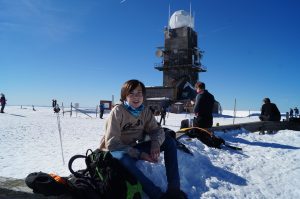
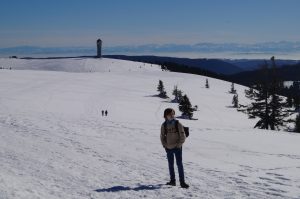
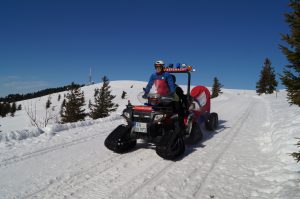
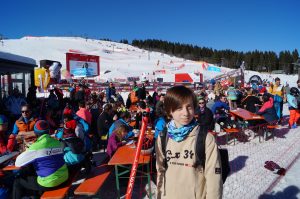
Sustainability
How to get here
The Höllenthalbahn railway operates a service from Freiburg im Breisgau (main station) to Feldberg-Bärental. The line passes through Hinterzarten and Titisee. The station Feldberg-Bärental is DB’s highest railway station, 967 m above sea level.
Then you have to take the bus nr 7300 to the station Feldberg-Hebelhof. From there you have to walk to the top of the Feldberg, the distance is four kilometers.
German rail operator Deutsche Bundesbahn aims to become climate-neutral. According to information provided by DB, the proportion of green energy used to power the railways is increasing rapidly, reaching 57 per cent in 2018.
No other form of transport is as eco-friendly as rail. DB aims to maximise this environmental benefit: its goal for 2030 is to halve carbon emissions in all its worldwide operations against the 2006 baseline and increase the renewables share in rail’s energy mix to 80 per cent, rising to 100 per cent by 2038. DB’s target is to achieve climate neutrality by 2050.
Accommodation
Hebelhof Youth Hostel on Feldberg mountain
The Feldberg Youth Hostel is well equipped to meet the needs and desires of school classes, groups and families. Built as a hotel in 1907, it became a hostel, named after the Alemannic poet Johann Peter Hebel, in 1955. The main building has the typical Black Forest atmosphere – you can still sense and see the former hotel. Go back in time via the quaint main staircase up to the cosy rooms under the roof and let the typical wood panelling of yesteryear with its paintings work its magic on you. The mountain house and the building next-door form a harmonious contrast to the hostel. One common thread is the lovely and colourful decoration that is present throughout the building and combines the old and the new.
https://www.jugendherberge.de/en/youth-hostels/feldberg-schwarzwald-7/portrait/
Food
Black Forest cherry cake is a popular German dessert consisting of chocolate sponges that are coated in whipped cream and dotted with kirschwasser-infused cherries.
Black Forest ham is the best-selling smoked ham in Europe. It is made from the hind leg of the pig, spiced according to producers’ own traditional recipes, and cold smoked using fir wood from the Black Forest.
Only brook trout or rainbow trout raised in southwestern Germany near the Schwarzwald mountain range are entitled to the name Schwarzwaldforelle (Black Forest trout).
https://www.hochschwarzwald.de/planen-buchen/unterkuenfte/restaurants-am-feldberg
Impressions
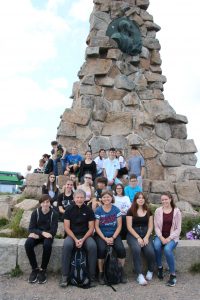

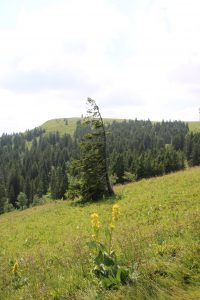
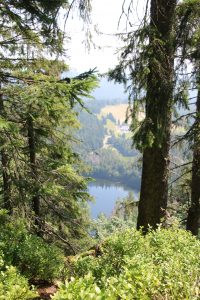
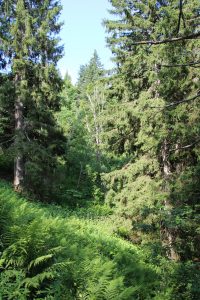
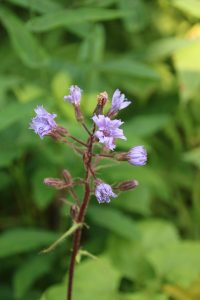
Others
Black Forest cherry cake – Classical style

Chocolate sponge cake
6 eggs
250 g caster sugar
pinch of salt
½ tsp of vanilla extract
1 tsp lemon juice
1 tsp lemon zest
170 g flour
25 g cornstarch
40 g cocoa
60 g butter
Kirschwasser whipped cream
1200 g cream
15 g (=1 ½ tbsp) gelatine powder
45 g white sugar
120 g Kirschwasser
Kirschwasser cherries
350 g sour cherries
50 ml Kirschwasser
Kirschwasser juice
80 g mix of cherry juice und Kirschwasser
Chocolate chips
80-100 g Dark Chocolate (70% cocoa)
To assemble
Springform cake pan: Ø 24 cm
Cake ring: Ø 26 cm
Baking time: 35-45 minutes at 190°C
In a large bowl, combine eggs, sugar and ingredients and beat well. Heat mixture using the double-boiler method and beat constantly until mixture has reached 55°C. Remove from heat and beat using a mixer until cool again.
Heat butter gently. Mix flour, cornstarch and cocoa in a bowl. Carefully dry ingredients into egg mixture. Slowly pour melted butter into mixture and gently fold in.
Put springform cake pan on a baking tray covered with baking paper. Pour sponge mixture into cake pan and bake in pre-heated oven.
Remove cooled sponge cake from pan and leave to cool completely.
Using a long knife cut the sponge cake into three layers.
Whip cream in portions until soft peaks form and collect in large bowl. Mix gelatine powder, sugar and Kirschwasser in a sauce pan and leave to swell for 10 minutes. Heat slowly and stir until gelatine is completely dissolved. Add a little whipped cream and stir to combine. Carefully fold Kirschwasser-gelatine mix into whipped cream.
Drip drain the cherries, mix them with the Kirschwasser and let soak for a minimum of 12 hours. Select 7-8 cherries for the decoration.
Put Kirschwasser cherries into sieve, squeeze and collect the Kirschwasser juice.
Add Kirschwasser or cherry juice at discretion.
Using a palette knife, cut thin chocolate shards from the chocolate bar, or grate or shave chocolate.
Place one of the sponge cake layers into cake ring and soak with Kirschwasser juice using a brush. Spread half of the Kirschwasser whipped cream over sponge and spoon cherries on top, gently pressing them into the cream. Place second cake layer on top, again soak with Kirschwasser juice and spread half of the rest of the Kirschwasser whipped cream over top. Add third cake layer, soak and spread a little cream over top. Refrigerate several hours or over night.
Take cake out of cake ring and mark the desired number of pieces on top. Spoon rest of the cream into pastry bag fitted with star decorative each and decorate each tip with rosettes. Place half a cherry on each piece. To finish, sprinkle chocolate shards over centre.
(Quelle: Schwarzwälder Kirschtorte, Käflein, Gmeiner, Hobuss, Edition Kaeflein, 2008)
